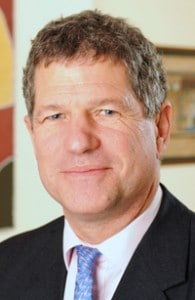There has been a rise in the number of female QCs, but a massive mismatch with the number of women at the Bar remains, figures released today have shown.
Women make up 31.5% of self-employed barristers but just 11% of QCs, although this is up from 8% five years ago.
The “Bar Barometer”, the first report on statistical trends at the Bar produced by the Bar Council’s new research department, also shows the extreme difficulties black and minority ethnic (BME) students have in securing pupillages.
While around 44% of those on the bar professional training course and called to the Bar are from a BME background, just 13% of those who gained pupillage in 2008/9 (the most recent figure) were BME, the lowest number in the five years covered by the report. Some 11% of tenancies or starter positions at the employed Bar went to BME barristers.
There was a fall, but a far less dramatic one, as women passed through the system – from 53% of those called to the Bar, to 41% of those gaining pupillage (down from a high of 51% in 2005/6) and 44% of those securing tenancies or first employment.
The report observed a general decline in the number of tenancies and starter positions at the employed Bar. There were 467 tenancies and 171 employed positions in 2009/10, compared to 531 and 191 respectively five years before. There were 1,852 newly called barristers.
The Barometer has been launched alongside a new careers website – Become a barrister – which aims to provide a range of accessible information to school and university students and was produced by the Bar Council and four Inns of Court.
In all, there were 15,270 practising barristers in 2009/10, a 0.5% rise on the year before; the practising Bar averaged 1.2% annual growth over the past five years, compared to 3% of those called to the Bar, a figure more in line with the annual growth of solicitors’ numbers.
Four in five barristers are self-employed. Women make up 46% of employed barristers and are significantly more likely to be employed than in private practice when compared to men (27% of female barristers are employed, compared to 16% of men).
A tenth of the practising Bar comes from a BME background, up from 9% five years before. Just 4% (57 in number) are QCs.
Bar Council chairman Peter Lodder QC said: “I am delighted that we are able to launch ‘Become a barrister’ today and to continue to highlight the importance of enabling the best candidates to come to the Bar, regardless of background.
“Whether through a coordinated ‘speakers for schools’ programme, a placement scheme with the Social Mobility Foundation, supporting the Citizenship Foundation’s Bar national mock trials competition or a number of other initiatives, the Bar Council is determined to make a difference.”
He added that the Bar Barometer, which will be produced annually, will enable the Bar Council to monitor the effect of these activities over a period of time. “Whilst there is still much more that we can do, I am confident that we are on the right track,” he said.












What are the statistics on self-employed women barristers at the start of their career? It would seem that although 44% of the profession at the time of first tenancy or employment are women, the overall figure is 31.5% of self-employed barristers who are women. That highlights the problem of women leaving the profession at a much higher rate than men. There is a structural problem as regards the Bar being a long term career for women which must be addressed for the Bar to prosper.